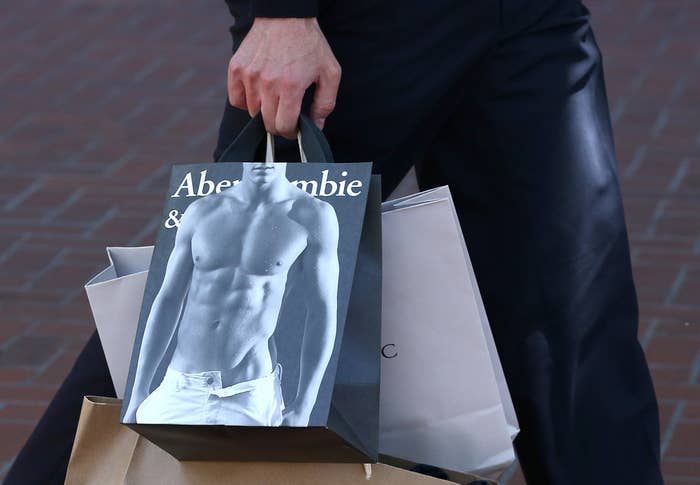
The Abercrombie store of the 90s and early 2000s is emblazoned upon the memory of most American 20-somethings: dim lighting, pulsating club music, cologne-drenched air, black-and-white photos of male abs, and attractive but aloof sales associates known as "models." It was cool, sexy and totally awkward to go in with your parents.
Years later, Abercrombie is in the process of remaking its namesake and Hollister stores, transforming the elements that once made it king of the mall, as sales continue to slide. Today, in its first earnings call since the exit of ex-CEO and modern-day founder Mike Jeffries, executives discussed making the stores friendlier and less exclusive, as well as plans to retrain staff.
"We have many opportunities to make our experience both easier, more friendly, so we are currently considering all options," Chief Financial Officer Joanne Crevoiserat said. "We're out talking to our stores, trying to understand what the customers are looking for, and specifically, yes, we are looking to retrain our selling associates, and that is a work in progress."
Christos Angelides, the new president of the Abercrombie brand, added that his team is "playing around" with different elements of the in-store experience, including "the content of the music," its volume, store darkness and whether fitting rooms should be locked or unlocked. Hollister, according to its brand president, Fran Horowitz-Bonadies, continues to have major success with glass storefronts, which it's been using to replace its exclusive surf club-inspired porches; customers, it turns out, like being able to see inside the store.
Abercrombie has traditionally considered its stores to be the company's most important marketing vehicle, and designed them to give off unique, exclusive vibes. Abercrombie and Hollister were both so cool that they didn't need to display their merchandise in windows to lure teens in; sales associates have said in the past that they were instructed not to approach customers and offer help. It was also very white — Abercrombie said recently that its stores now have more than 50% non-white staff, up from less than 10% in 2004.
With sales struggling, the company has been working hard towards overhauling that image.
Abercrombie's sales online and those at stores open a year or more fell 8% for the year through Jan. 31, the third straight year of same-store sales declines. That's a key measure for retailers because it shows the health of the existing business, separate from the sales boosts gained by opening new stores and other new businesses. Overall, sales in the fourth quarter fell 14%, the eighth straight quarterly plunge, and dropped for the year to $3.74 billion. Abercrombie has shuttered 275 stores since 2010 and said it plans to maintain that rate of closures.
Today's comments underscored the exit offormer CEO Jeffries in December. Jeffries, who ran the retailer with little oversight starting in 1992, retired after a year of extreme pressure from shareholders and company insiders who believed he was holding the company back. While the former executive was responsible for Abercrombie's sex-meets-Ivy League aesthetic in the 90s, he wasn't able to keep up with changing teen tastes and the rise of fast-fashion in recent years.
Jeffries, 70, also came under fire for excessive use of company funds on the corporate jet and hotels and the unusual involvement of his partner in the business. A 40-plus-page airplane manual containing instructions on how to treat him and his partner on the corporate jet — down to underwear specifications for the staff — continues to haunt Jeffries, as well as comments he made to Salon in 2006, saying Abercrombie only markets to "cool, good-looking people."
Abercrombie noted today that they're selling the jet.

